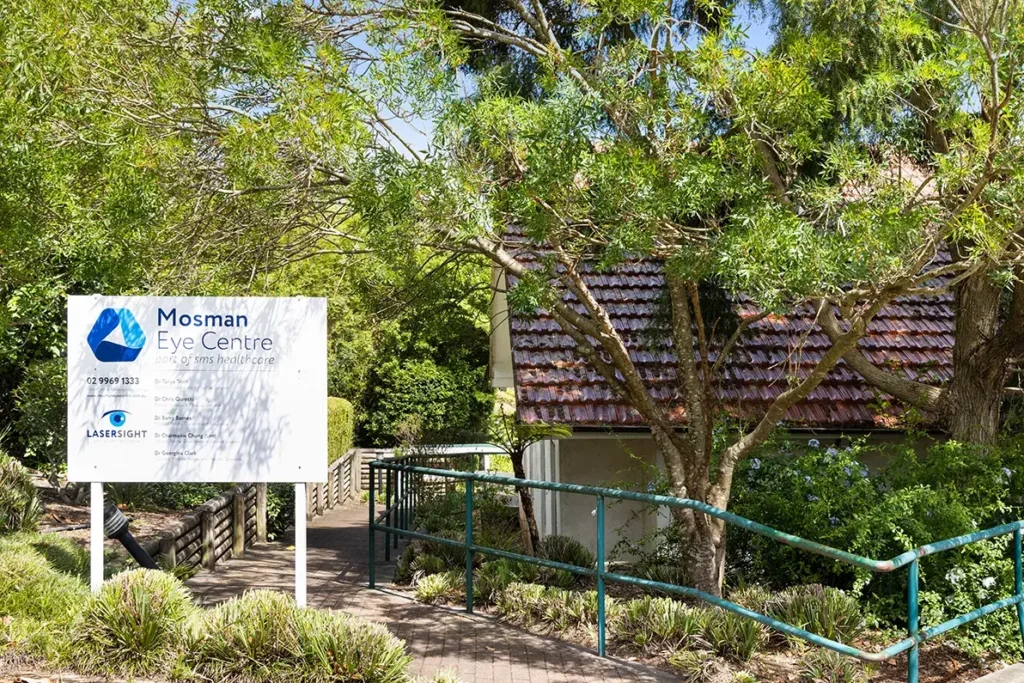Tearing is most commonly due to a blockage or narrowing of the nasolacrimal duct. The nasolacrimal duct tends to narrow with age, but this process is probably exacerbated by persistent infections and can occur earlier in life (see Tearing in Children). In order to cure tearing caused by nasolacrimal duct narrowing or obstruction a dacryocystorhinostomy (DCR) is usually required.
During DCR surgery a new connection between the lacrimal sac (“tear sac”) to the inside of the nose is made. This by-pass the narrowed or obstructed duct along which the tears normally pass from the tear sac into the nose. A fine silicon stent (tube) is often placed during the surgery to maintain the opening in the tear system during the healing process. Tube removal is 2 – 4 weeks postoperatively in the rooms and is painless.
With advances in technology and instrumentation it is possible to perform DCR surgery through the nostril with no incision on the skin of the face.
Endoscopic DCR surgery is a day surgery procedure usually performed under a general anaesthetic.
What does the treatment involve?
During DCR (dacryocystorhinostomy) surgery a direct opening is created between the tear sac and the nose, bypassing the blocked nasolacrimal duct. The procedure traditionally was performed through an incision on the side of the nose, but principally this procedure uses the transnasal or endoscopic approach which is now considered the gold standard for this treatment” Both procedures are routinely performed in a day surgery on an outpatient basis.
Endoscopic DCR is routinely performed under general anaesthesia. The operative time for both techniques is approximately 45 minutes.
At the time of surgery, a fine silicone stent is placed and then removed 3 weeks post-op in the rooms. Occasionally this prolapses spontaneously requiring an extra visit to the rooms for early removal.
How will I look immediately after surgery?
After an endoscopic DCR, there will be no external signs of you having had an operation, with no swelling or bruising.
What is the recovery time?
Post-operative pain is minimal usually requiring no more than Paracetamol, with the main inconvenience being the avoidance of exercise, straining or other activities that increase nasal blood flow and thus the risk of bleeding for the first week.
Your nose will feel congested and some patients may have 1-2days of discomfort in the region of the tear sac. A regime of eye drops and nasal sprays are required post-operatively.
What are the risks?
All surgery carries risk, overall, the risk is low. Your specialist will discuss risks at the time of your consultation.
How long do the results of the surgery last?
The success rate for endoscopic and external DCR is approximately 95%, however tear drainage is a very complex physiological process and tearing may be the result of a number of separate issues. Therefore, careful patient selection is essential.
Some patients will still tear with the stent in place and then on removal at 3 weeks postop the tearing resolves and after that it is very unlikely for the tearing to recur.
Is there anyone who shouldn't have this surgery?
Many patients are on blood thinners such as aspirin or warfarin. As the nose has a very rich blood supply, blood thinners are best stopped 7-10 days preoperatively. Depending on your general health this is sometimes not possible and your specialist would then seek advice from your family physician or cardiologist. The surgery is possible whilst still on some of the blood thinners but special care and attention is required and often at an overnight facility so the patient can be monitored for nose bleeds.





